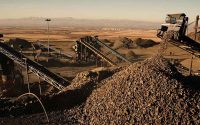The balance of power in the world of steel appears to be on the threshold of a tectonic shift as Countries which were once considered to be fringe elements in the global steel market gradually begin to create ripples in the delicately poised industry.
China altered the course of the steel industry with its meteoric rise in the past decade, disrupting market equilibrium and thus establishing itself as a dominant entity in steel. And now a similar situation seems to be arising as the industry inches closer to yet another defining era.
Analyzing potential for growth in consumption, opportunities for increasing production and the global economic scenario, we take an in-depth look at five emerging steel markets which are most likely to be at the forefront of the transformation in steel.
India, Iran, Pakistan, Bangladesh and Vietnam have emerged as the most promising markets for steel in days to come for various reasons. We have closely studied their domestic environment with regard to politico-economic circumstances, availability of resources, scope of domestic demand growth and export potential.
A young population, an abundance of natural resources and a strong agenda for reform are few of the many factors which are driving the sector and infrastructure projects within these regions.
IRAN
IRAN, with its vast reserves of key natural resources, large manufacturing potential and its policy to bolster both production and exports deserves a place in this list. It is an economy which is in resurgence after partial resolution of long standing geo-political differences. Even the government of Iran appears to be determined at propelling growth and has chosen the manufacturing sector to lead its economic development. Although, the country’s domestic steel consumption is on a decline, it is Iran’s export oriented push towards production, abundance of iron ore and most importantly the availability of gas at cheap prices that makes Iran a key player in the steel market.
The uncertainty in coking coal prices which have fluctuated vigorously over the past few years gives a significant edge to gas based steel production, which is Iran’s primary source. Not only does this shield Iran from uncertainty but also gives Iran an opportunity to reap the benefits of one of its key natural resources. According to data from Iranian petroleum ministry the country has 29.6 trillion cubic metres of gas reserves which is 15.8 per cent of world’s total reserves and places Iran second on the list of countries by proven natural gas reserves. Iran is also placed 11th on the list of largest producers of Iron ore adding to its production supremacy.
The oil and gas power house, long sidelined from International markets by the US, has shifted its focus towards bolstering steel output to feed the massive global demand for semi finished products.
CEO of JTC iron-Ore Company and an internationally acknowledged expert on Iran’s Iron and Steel industry, Mr. Keyvan Jafari Tehrani while speaking to Steel-360 gives an inside look into the Middle Eastern giant’s steel markets, present outlook and future possibilities.
SCOPE FOR EXPORT REVENUE
Mr. Tehrani believes that the scope for increasing export revenue is vast and the country has adapted to the requirements of the world markets. “There are import duties on end products such as rebars and the country is trying to therefore increase billet export. Efforts are being made to export to countries where there is no anti dumping” Mr. Tehrani asserted. According to him, “altogether Iran is trying to increase exports. Last year it was 6 mnt and this year it might be above 8 mnt”. “Obviously a big part of the increase would be of billet” Mr. Tehrani added.
However, when it comes to Iron ore exports, the prospects according to Mr. Tehrani have diminished considerably in the last two years after India began exporting.
According to him, “before September 2016 Iran enjoyed high export volumes for medium to low grade Iron ore, sometimes even as low as below 50 per cent.
However, now with India back in the market there is a considerable amount of fine cargo in the international market driving Iran out”.
Mr. Tehrani, giving an example of diminished export to China informed, Iran’s share of total Iron ore export to China was above 2 per cent in 2013 but now it has fallen below 1.5 per cent.
CHALLENGES AHEAD
En-route to rebuilding its economy after international sanctions were lifted, Iran stares at a long and challenging road ahead. Speaking about these challenges Mr. Tehrani stressed on the need for optimum capacity utilization as a key factor in reaching the goals for the country’s vision. “Presently capacity utilization is quite low”, Mr. Tehrani elaborated. He further explained in detail the gaps being felt towards building up steel production. “There exists a requirement of 57 mint of Pig Iron where as the active generation and plants in progress account for merely 28 mnt and 20 mnt respectively, leaving a shortage of 9 mnt. Similarly, to reach a target of 55 mnt by 2025, there exists a deficit of 5 mnt of pellets and 32 mnt of Iron ore out of which 16 mnt is Iron ore concentrate. A plant would have to be put in place to bridge this deficit”.



Source: STEEL 360 INDIA





